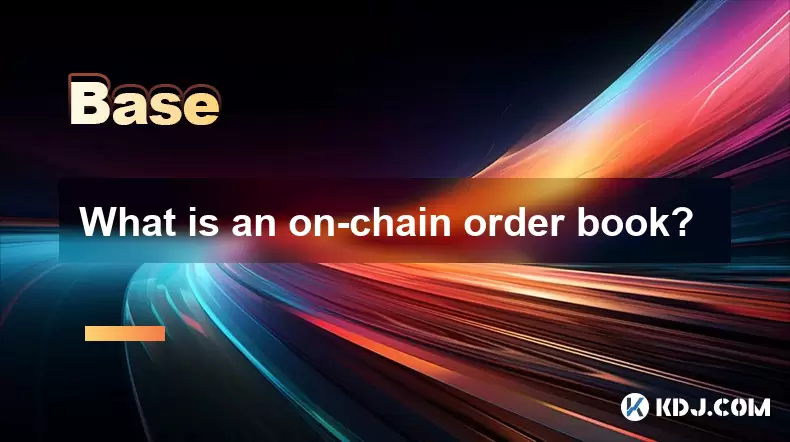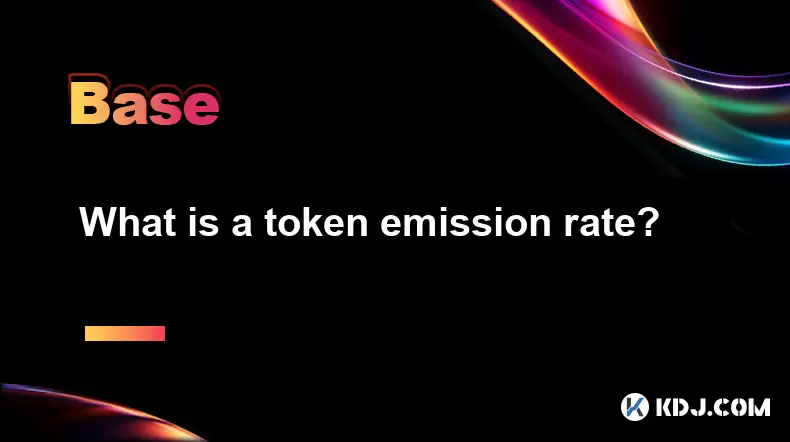-
 Bitcoin
Bitcoin $108,562.4295
0.46% -
 Ethereum
Ethereum $2,533.9553
1.52% -
 Tether USDt
Tether USDt $1.0002
-0.01% -
 XRP
XRP $2.2542
2.23% -
 BNB
BNB $662.4567
1.48% -
 Solana
Solana $151.4114
3.48% -
 USDC
USDC $0.9999
0.00% -
 TRON
TRON $0.2860
0.91% -
 Dogecoin
Dogecoin $0.1685
3.72% -
 Cardano
Cardano $0.5809
1.63% -
 Hyperliquid
Hyperliquid $39.2916
1.85% -
 Sui
Sui $2.8874
0.85% -
 Bitcoin Cash
Bitcoin Cash $496.5801
2.72% -
 Chainlink
Chainlink $13.3582
2.48% -
 UNUS SED LEO
UNUS SED LEO $9.0279
0.07% -
 Avalanche
Avalanche $18.0773
2.30% -
 Stellar
Stellar $0.2426
3.05% -
 Toncoin
Toncoin $2.9086
6.01% -
 Shiba Inu
Shiba Inu $0.0...01170
2.97% -
 Hedera
Hedera $0.1587
3.47% -
 Litecoin
Litecoin $87.4596
1.13% -
 Monero
Monero $317.0425
0.73% -
 Polkadot
Polkadot $3.3778
1.90% -
 Dai
Dai $0.9999
-0.01% -
 Ethena USDe
Ethena USDe $1.0001
-0.01% -
 Bitget Token
Bitget Token $4.4095
0.63% -
 Uniswap
Uniswap $7.3593
6.80% -
 Pepe
Pepe $0.0...09910
3.64% -
 Aave
Aave $274.7388
2.68% -
 Pi
Pi $0.4607
0.48%
What is an on-chain order book?
An on-chain order book records crypto trades directly on the blockchain, offering transparency, decentralization, and security through smart contracts.
Jul 07, 2025 at 05:21 am

Understanding the Concept of an On-Chain Order Book
An on-chain order book refers to a decentralized ledger-based system where buy and sell orders for cryptocurrencies are recorded directly on the blockchain. Unlike traditional centralized exchanges that maintain their own internal databases for order matching, on-chain order books store all transaction data publicly and immutably on the blockchain network. This ensures transparency, trustlessness, and decentralization, as every participant can verify the authenticity of trades without relying on a central authority.
The core idea behind this model is to eliminate intermediaries and provide users with full control over their assets and trading data. Each trade or order placed is executed via smart contracts, which automatically enforce the rules of transactions based on predefined conditions. The result is a more secure and censorship-resistant trading environment.
How Does an On-Chain Order Book Work?
In a typical on-chain order book system, when a user places a buy or sell order, that information is broadcasted to the blockchain network and recorded in a block after validation. These orders remain open until matched with a corresponding counter-order. Since everything is stored on-chain, there's no need for off-chain servers or third-party infrastructure to manage the order flow.
- Order Placement: Users submit orders through a decentralized application (dApp) or wallet integrated with the on-chain exchange protocol.
- Smart Contract Execution: Once submitted, the order is processed by a smart contract, which logs it into the public ledger.
- Matching Mechanism: Orders are matched algorithmically when price conditions align, again handled by the smart contract.
- Settlement: Upon successful match, the trade is settled directly between wallets without involving a custodial entity.
This workflow eliminates issues like front-running, manipulation, and server downtime common in centralized systems.
Differences Between On-Chain and Off-Chain Order Books
One of the most critical distinctions lies in where the order data resides. In off-chain order books, all trade data is stored on private servers controlled by exchange operators. While this allows faster execution speeds, it also introduces counterparty risk and potential manipulation.
Conversely, on-chain order books offer verifiable transparency because every action is visible on the blockchain explorer. There's no possibility of hidden liquidity or artificial volume since all data is immutable and publicly accessible.
Another key difference is the cost of operation. Because each interaction with the blockchain requires gas fees, using an on-chain order book can be more expensive than its off-chain counterpart. However, layer-2 solutions and optimized protocols are emerging to mitigate these costs while preserving decentralization.
Benefits of Using an On-Chain Order Book
There are several advantages to utilizing an on-chain order book platform:
- Decentralization: No single point of failure or control means users retain full custody of their funds throughout the trading process.
- Transparency: Every trade, cancellation, and update is recorded on the blockchain, making it tamper-proof and auditable.
- Security: Without a centralized database, hacking risks associated with traditional exchanges are significantly reduced.
- Censorship Resistance: Governments or entities cannot arbitrarily freeze accounts or halt trades, offering greater financial freedom.
These benefits make on-chain order books particularly appealing to privacy-conscious traders and those seeking non-custodial alternatives.
Challenges and Limitations of On-Chain Order Books
Despite their promising features, on-chain order books face certain limitations that hinder widespread adoption:
- Latency Issues: Writing to the blockchain takes time, which can lead to slower order execution compared to high-frequency trading platforms.
- High Gas Fees: Especially on congested networks like Ethereum, placing and canceling orders can become prohibitively expensive.
- Limited Liquidity: As many traders still prefer fast and liquid off-chain platforms, on-chain markets often suffer from thinner order books.
Developers are actively working on scaling solutions such as rollups and sidechains to improve performance without compromising security or decentralization.
Use Cases and Real-World Implementations
Several projects have already implemented on-chain order book models successfully:
- dYdX: A permissionless trading platform that uses StarkWare’s zk-rollup technology to enable fast and low-cost perpetual contract trading while maintaining on-chain order books.
- Serum: Built on the Solana blockchain, Serum offers a fully decentralized exchange with an on-chain order book designed for speed and efficiency.
- Loopring DEX: Utilizes zero-knowledge proofs to scale trading operations while keeping order books on Ethereum.
These platforms demonstrate how innovation in blockchain technology can overcome earlier limitations of pure on-chain trading systems.
Frequently Asked Questions (FAQs)
Q: Is an on-chain order book the same as a decentralized exchange (DEX)?
A: While many DEXs utilize on-chain order books, not all do. Some DEXs use automated market makers (AMMs) instead of order books to facilitate trades.
Q: Can I cancel an order once it’s placed on an on-chain order book?
A: Yes, but cancellation must also be done via the blockchain, which may incur a gas fee depending on the network used.
Q: Are on-chain order books suitable for high-frequency trading?
A: Currently, due to latency and gas cost constraints, they are less ideal for high-frequency strategies compared to centralized or hybrid models.
Q: Do on-chain order books support margin trading or leverage?
A: Some advanced platforms like dYdX do offer leveraged trading options built on top of on-chain order books, though this depends on the specific protocol.
Disclaimer:info@kdj.com
The information provided is not trading advice. kdj.com does not assume any responsibility for any investments made based on the information provided in this article. Cryptocurrencies are highly volatile and it is highly recommended that you invest with caution after thorough research!
If you believe that the content used on this website infringes your copyright, please contact us immediately (info@kdj.com) and we will delete it promptly.
- Elon Musk, Andrew Yang, and Polymarket: What's the Buzz?
- 2025-07-07 10:30:12
- Lightchain AI's Bonus Round: The Final Chance Before Mainnet & Ecosystem Tools
- 2025-07-07 10:30:12
- TON Foundation, UAE Golden Visa, and Toncoin Staking: A New Chapter in Crypto Residency?
- 2025-07-07 10:50:12
- Altcoin Prices, Institutional Investors, and the Ethereum Rotation: What's the Deal?
- 2025-07-07 10:50:12
- TON Coin, Golden Visa, and UAE Denial: What's the Real Deal?
- 2025-07-07 10:55:12
- PEPE's Bullish Trend: Riding the 50% Gain Wave?
- 2025-07-07 10:55:12
Related knowledge

What is a user-generated content (UGC) NFT platform?
Jul 04,2025 at 01:49pm
Understanding the Concept of a UGC NFT PlatformA user-generated content (UGC) NFT platform is a digital marketplace or ecosystem where users can create, mint, and trade non-fungible tokens (NFTs) that represent ownership of original digital content they produce. Unlike traditional NFT platforms where creators often include professional artists or develo...

What is composability in DeFi?
Jul 06,2025 at 04:07pm
Understanding the Concept of Composability in DeFiComposability in DeFi refers to the ability of decentralized finance protocols and smart contracts to interact seamlessly with one another, much like building blocks that can be combined in various ways to create new financial products and services. This concept is a core innovation within the DeFi ecosy...

What is a "crypto primitive"?
Jul 05,2025 at 10:14pm
Defining the Concept of a Crypto PrimitiveIn the context of blockchain and cryptocurrency, a crypto primitive refers to a fundamental building block or foundational element used in constructing decentralized systems and cryptographic protocols. These primitives are essential for enabling secure transactions, consensus mechanisms, and smart contract exec...

What is a fair launch?
Jul 05,2025 at 07:31pm
Understanding the Concept of a Fair LaunchA fair launch refers to the release of a cryptocurrency or blockchain project in a manner that ensures equal opportunity for all participants. Unlike traditional token launches, which may involve private sales, venture capital funding, or pre-mining, a fair launch emphasizes transparency and decentralization. In...

What is a token emission rate?
Jul 07,2025 at 02:51am
Understanding the Basics of Token Emission RateIn the realm of cryptocurrencies, token emission rate refers to the speed or frequency at which new tokens are generated and released into circulation within a blockchain network. This concept is fundamental in understanding how certain blockchain ecosystems manage inflation, incentivize participants, and m...

What is a cliff in tokenomics?
Jul 05,2025 at 07:18pm
Understanding the Concept of a Cliff in TokenomicsIn the world of cryptocurrency and blockchain, tokenomics plays a pivotal role in shaping the economic behavior of a digital asset. One of the key mechanisms used to manage token distribution is known as a cliff. This concept is commonly applied in projects that include vesting schedules for tokens, espe...

What is a user-generated content (UGC) NFT platform?
Jul 04,2025 at 01:49pm
Understanding the Concept of a UGC NFT PlatformA user-generated content (UGC) NFT platform is a digital marketplace or ecosystem where users can create, mint, and trade non-fungible tokens (NFTs) that represent ownership of original digital content they produce. Unlike traditional NFT platforms where creators often include professional artists or develo...

What is composability in DeFi?
Jul 06,2025 at 04:07pm
Understanding the Concept of Composability in DeFiComposability in DeFi refers to the ability of decentralized finance protocols and smart contracts to interact seamlessly with one another, much like building blocks that can be combined in various ways to create new financial products and services. This concept is a core innovation within the DeFi ecosy...

What is a "crypto primitive"?
Jul 05,2025 at 10:14pm
Defining the Concept of a Crypto PrimitiveIn the context of blockchain and cryptocurrency, a crypto primitive refers to a fundamental building block or foundational element used in constructing decentralized systems and cryptographic protocols. These primitives are essential for enabling secure transactions, consensus mechanisms, and smart contract exec...

What is a fair launch?
Jul 05,2025 at 07:31pm
Understanding the Concept of a Fair LaunchA fair launch refers to the release of a cryptocurrency or blockchain project in a manner that ensures equal opportunity for all participants. Unlike traditional token launches, which may involve private sales, venture capital funding, or pre-mining, a fair launch emphasizes transparency and decentralization. In...

What is a token emission rate?
Jul 07,2025 at 02:51am
Understanding the Basics of Token Emission RateIn the realm of cryptocurrencies, token emission rate refers to the speed or frequency at which new tokens are generated and released into circulation within a blockchain network. This concept is fundamental in understanding how certain blockchain ecosystems manage inflation, incentivize participants, and m...

What is a cliff in tokenomics?
Jul 05,2025 at 07:18pm
Understanding the Concept of a Cliff in TokenomicsIn the world of cryptocurrency and blockchain, tokenomics plays a pivotal role in shaping the economic behavior of a digital asset. One of the key mechanisms used to manage token distribution is known as a cliff. This concept is commonly applied in projects that include vesting schedules for tokens, espe...
See all articles

























































































